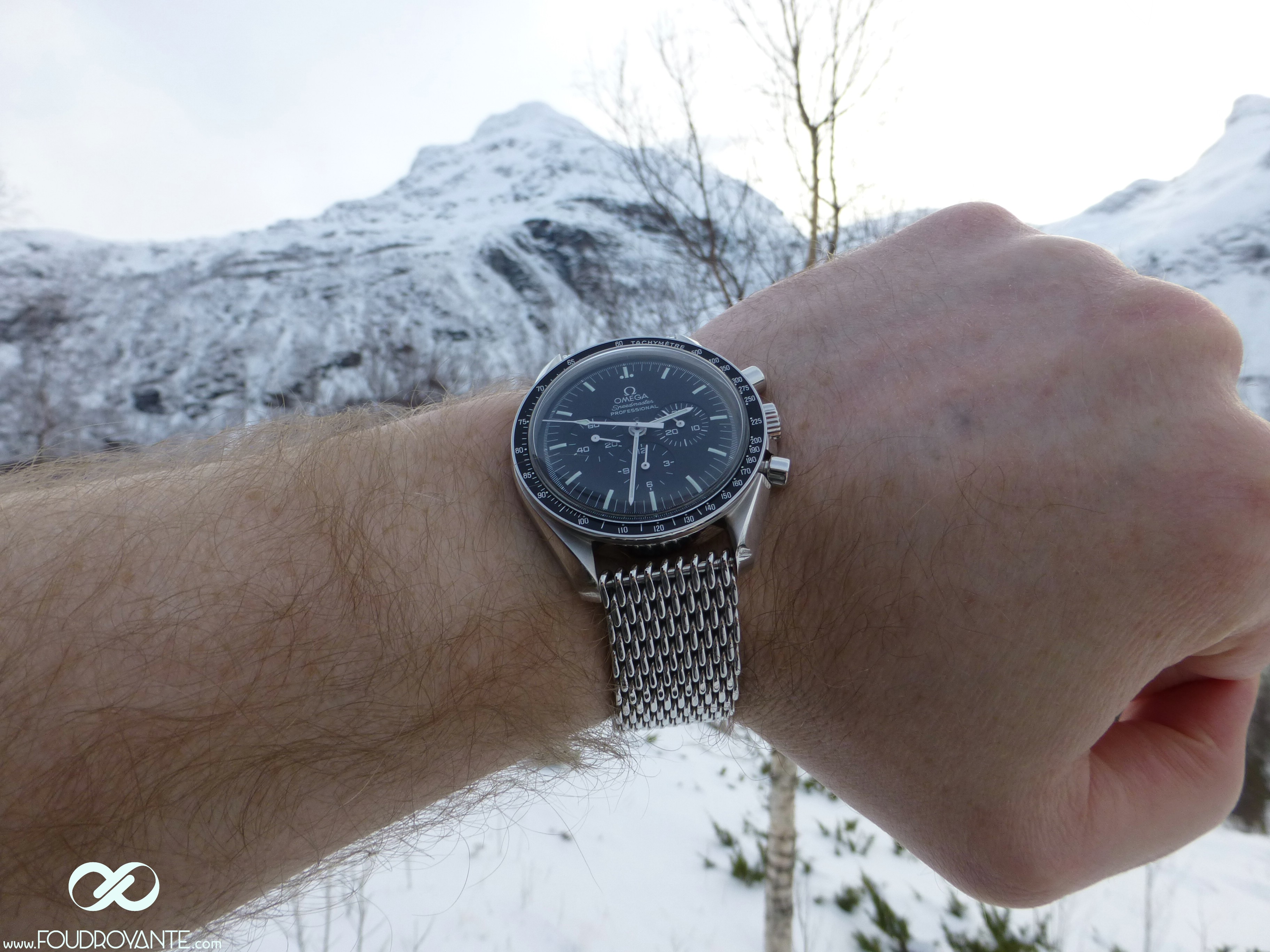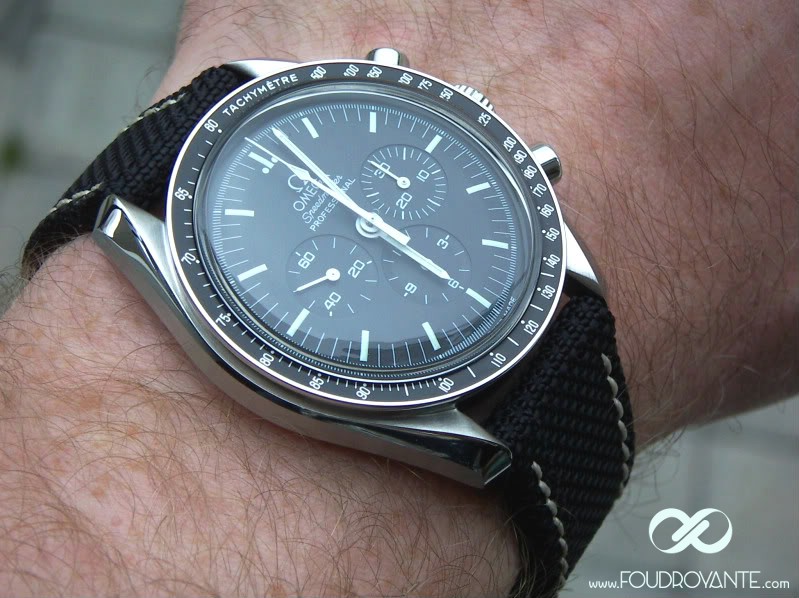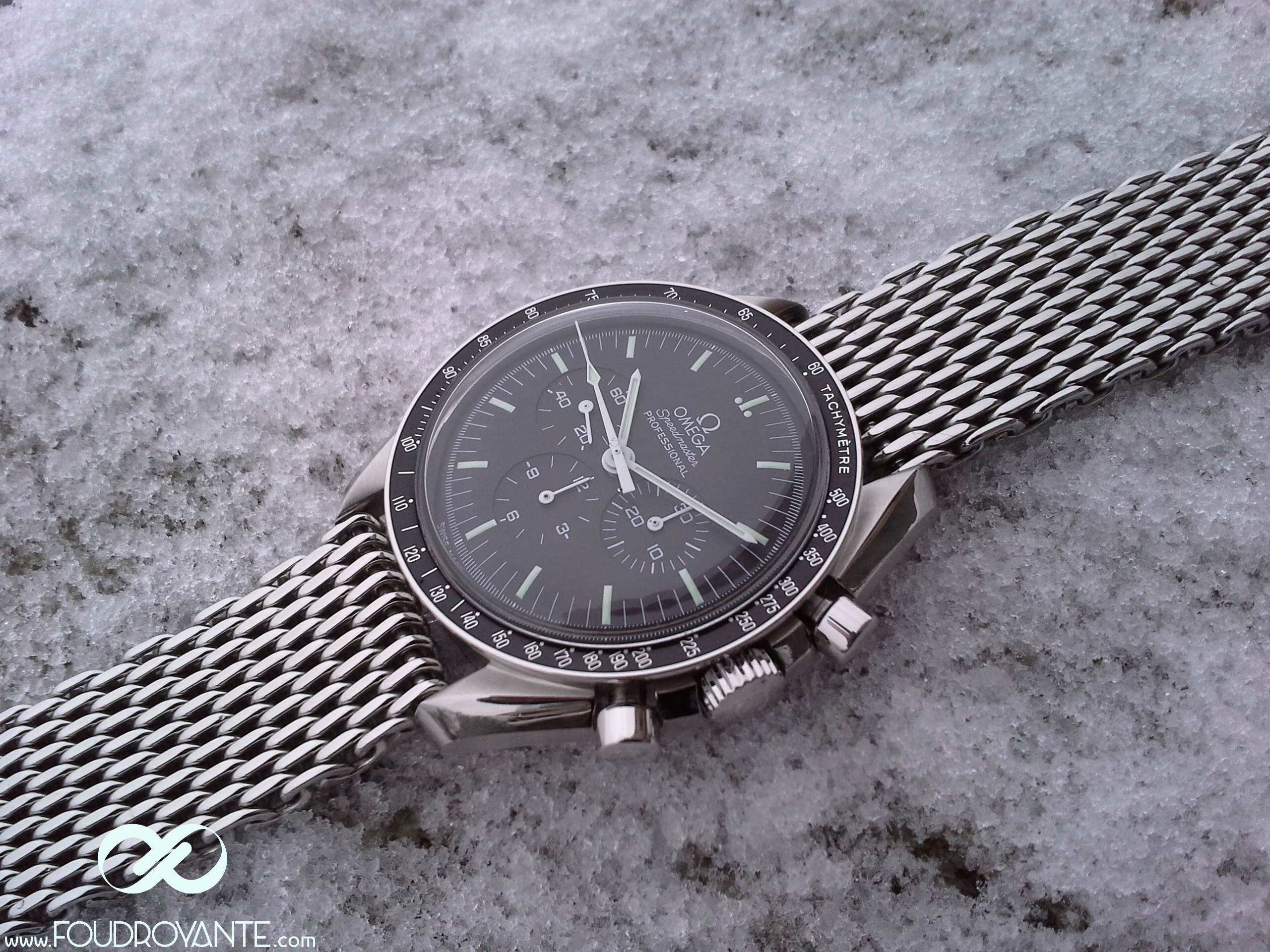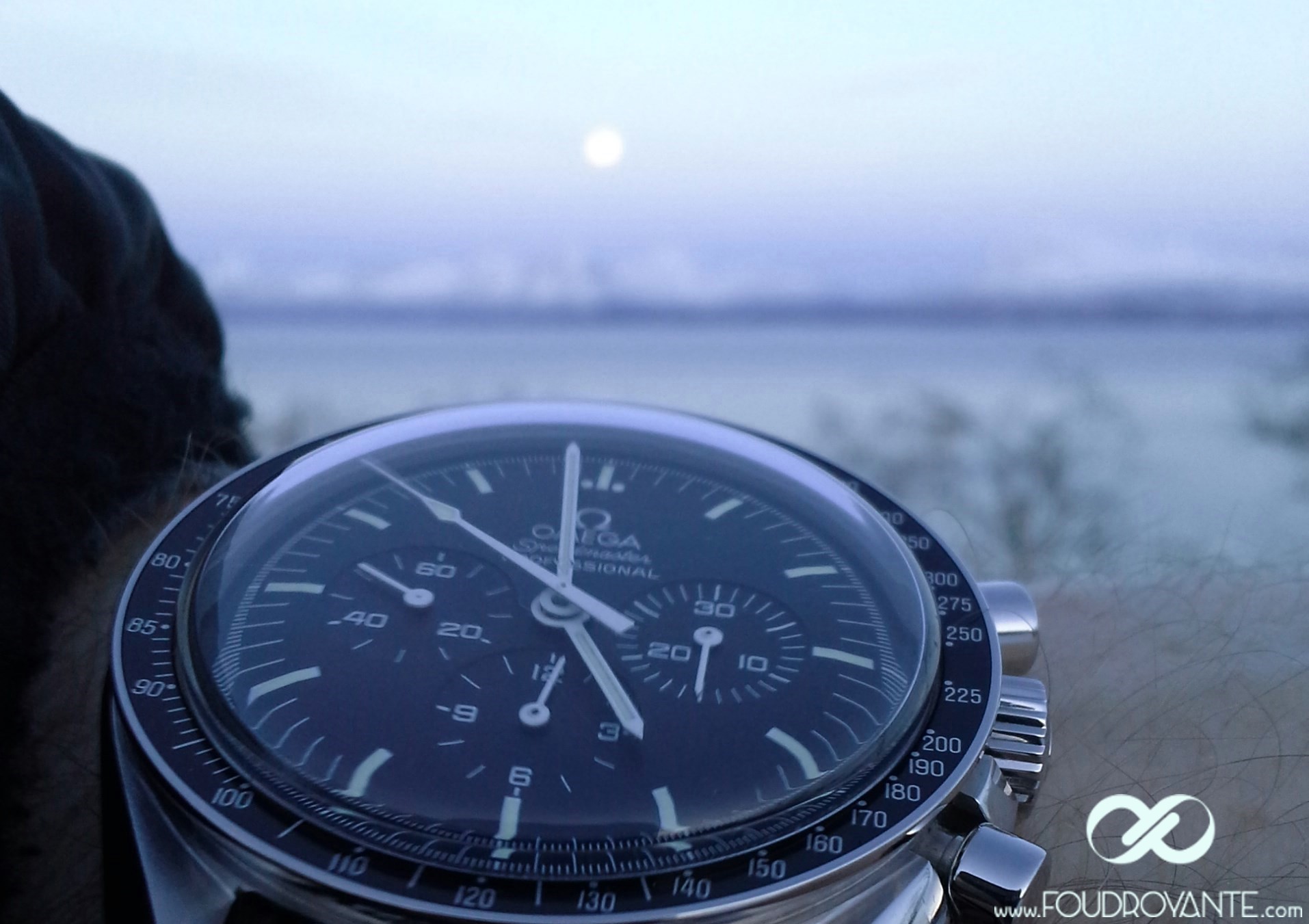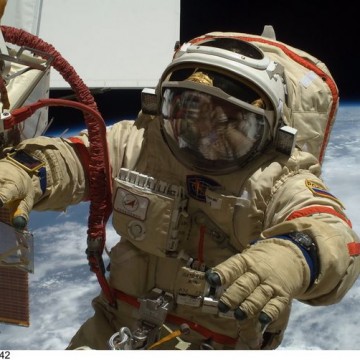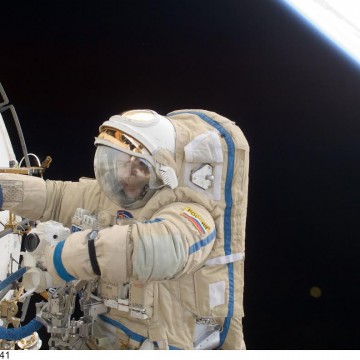Omega Speedmaster Professional: the Legend 1/4
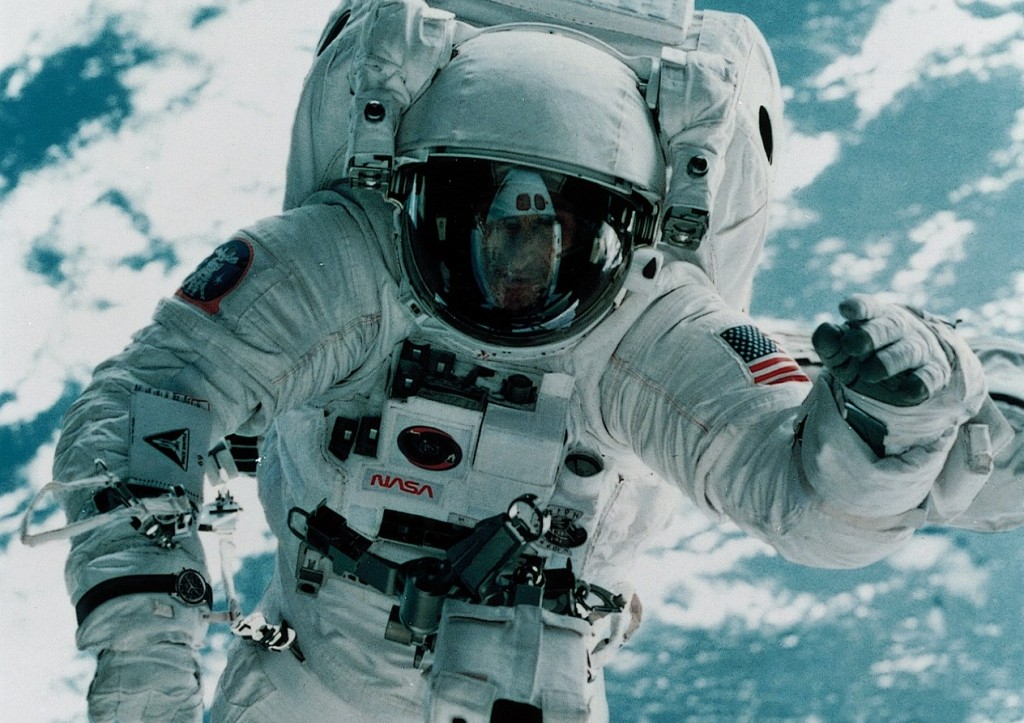
Hei alle sammen!
A massively balled watch…
- It is hard to make another presentation of a watch as legendary as the Speedmaster. It’s been impossible to keep track of all the articles that have been written on the subject. But that doesn’t mean that we should stop talking about it…
especially for those who’ve never owned one, or have kept on dreaming about it by full moon. This could be the article that set them on the spatial-temporal quest for watchmaking. Who knows…First of all, you should be aware that the Omega Speedmaster, created in 1957 and later modified, was not designed for the use that made it legendary: accompany American astronauts on their most perilous missions.
It had been originally intended, inter alia, for sports competitions timekeeping.
History tells us that Omega’s connection to NASA originated in 1965, during the first spacewalk by an American astronaut, wearing a Speedmaster. The small hand-winding mechanical chronograph became legendary by this turning point.
- The selection:
It’s been said that from 1962, a pair of American astronauts had pestered NASA by singing the praises of their own Speedmater, which had perfectly worked during an orbital mission.
By 1964, their supervisors must have been fed up with it: recognized as indispensable tools during the space missions, watches could not be the personal choice of the astronauts. Just in case they would have opted for a Mickey Mouse watch.
They therefore needed to formalise a chronograph, after a series of tests quite similar to the practices of the Inquisition.
As the story is told, between 1964 and 1965, over a period of about 4 months and a half, the Speedmaster as well as some other watches from renowned brands were tested. Of course, all of them were chronographs.
Longines and Rolex participated with Omega: those watches were made available by some American distributors, without their respective firm’s knowledge.
- Once the test campaign was over, in 1965, all the watches were badly knocked about with a tarnished reputation except one: the Speedmaster. It had became the official astronauts watch: it came, it saw, it conquered!
This watch became an icon, as it was worn by some hotheads during the most perilous missions.
Those guys had enough hair on the trunk to crop the forest with a chain saw, or open a bear hunt with a calibre 50 without risking to take a stray bullet in the face. They had the bottom literally sat on the top of a ballistic missile, they got kicked in the ass at the take-off, they were sent into orbite, they got back across the earth’s athmosphere like meteorites and ended up parachuted in the ocean with a rough landing.
- I have seen with my own eyes one of the capsules in which those madmen did their first space tours, and I can honestly say that engineers had calqued the cabin on the sardin can concept, with a confort worthy of a Siberian questioning chair.
Those extra narrow capsules were specially reserved for the ballsy who don’t even sweat during a fire.
The subtle and radio humour of those guys was always present, even if going back to the atmosphere could be at risk, or if they took the risk of an endless orbite around the earth, or around the moon, or even an eternal ecape to nowhere… Adios muchachos, now you are tacos…
They were aware of all (almost!) the risks to which they were exposed, and had all the time to think of it during their training or their missions: they needed an uncrushable mental condition and be ready to face the most inhuman conditions.
Was the conquest of the unknown stronger than all the rest? … Or was it simply the desire of giving the finger to death?
- Bravery never waned, but I do think that the strongest motivation was actually to open the door on a future for the human race: when we seriously think about it, that is worth all the gold in the world.
Anyway, we cannot say that glory has let them down, and it is well-deserved.
Vi snakkes!
Will.
